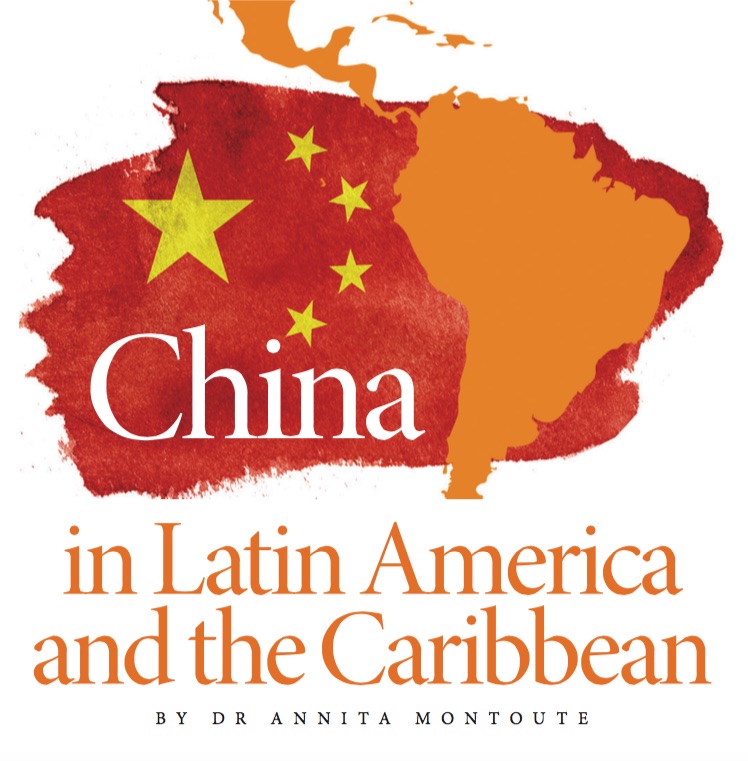
In the New Era, under the current leadership of President Xi Jinping, a new paradigm of economic, social, and political growth emerged in the People’s Republic of China as a guiding framework for human progress and modernisation across the developing world. Integral to China’s political reform in this era is the vision of a community of shared future; an aspirational dictum underscoring China’s commitment to advancing inclusivity in the prevailing global order, wherein states at all levels of development would be accommodated and their individual political and social structures respected.

Correspondingly, in solidarity with the community of nations, China articulated common development, political inclusiveness, and co-operative security as the three pillars that would underpin its contributions to global governance. Moreover, the recently concluded 20th National Congress of the Communist Party of China reiterated that China has always been committed to its foreign policy goals of upholding world peace and promoting common development, and it is dedicated to promoting a human community with a shared future.
Laying out the basis to China’s diplomacy, the Congress emphasised that China is committed to its fundamental national policy goal of opening up to the outside world and creating new opportunities for countries to advance their own development.
The Belt and Road Initiative (BRI) constitutes the focal point of China’s international diplomacy strategy in the 21st century. As its main foreign and economic policy tool, the BRI is central to China’s modern trajectory towards opening and creating a community of common destiny with its global counterparts. Assessment of the BRI is mixed. Some criticisms include that it is a neo-colonial project which supports China's expansionist ambitions, the inability of developing countries to pay debt incurred from their participation in projects, and adverse environmental and social impacts along BRI routes.
At the same time, others argue that the above takes away from the agency of participating countries and relegates them to passive and powerless roles rather than active participants in the initiative. Additionally, a Bruegel (2019) study conducted a global survey of media articles of the BRI and found that, with the exception of South Asia, all regions generally positively received this initiative.
Latin American and Caribbean countries are among those which have benefitted the most from China’s emergence as a global trade power in the last 20 years. For the period 2000 to 2020, China-LAC trade grew 26-fold from US$12 billion to US$310 billion.
China’s Second Policy Paper on LAC (2016) presents a blueprint for deepening co-operation with the region. The paper defines China’s updated objectives and expanded mechanisms for collaboration in LAC, alongside broader financing and infrastructure building proposals for trade and investments. The revived policy centres on building new relationships based on mutual political trust, closer international relations co-ordination, mutual opportunities for cultural learning, and impactful reinforcement of existing regional and bilateral LAC relations. Targeted areas of co-operation include climate change, trade in specialty products, expanded trade arrangements, and the establishment of public-private partnership arrangements for construction and infrastructure building.
The China-Community of Latin American and Caribbean States (CELAC) Forum, launched in 2014, provides a platform for inter-regional dialogue of foreign ministers at triannual high-level meetings between China and the LAC. Following consultations, in January 2018, an invitation to join the BRI was formally extended by China’s Minister of Foreign Affairs to countries in Latin America and the Caribbean at the second China-CELAC Ministerial Forum in Santiago, Chile. A Special Declaration on the Belt and Road Initiative was then signed by the forum’s participants, and consequently, 15 LAC countries signed memoranda of understanding (MOUs) with China in 2018, and three in 2019. By 2021, 19 LAC states were signatories to the BRI.
Latin American and Caribbean countries are among those which have benefitted the most from China’s emergence as a global trade power in the last 20 years. For the period 2000 to 2020, China-LAC trade grew 26-fold from US$12 billion to US$310 billion. This development has been accompanied by a decrease in trade with traditional partners. The EU, for example, which had been the most important and second largest trading partner for South America and the whole LAC respectively, has experienced a decrease in its market share as China’s trade increases with LAC countries. China is also one of the most important sources of foreign direct investment and finance for the LAC region.
Critically, as the former imperial powers’ strategic interests wane in Latin America and Caribbean, the region’s relationship with China has continued to flourish. China’s non-imperial ambitions in the region have been influential in opening up partnerships based on the ideals of mutual benefit and trust, equality, and win-win co-operation.
Immediately distinguishable in the Chinese-LAC relationship is the absence of an overtly imposing stance regarding the negotiation and re-payment structure of loans by the Chinese towards the region’s small island developing states (SIDS). In addition, in contrast to Western backed loans, Chinese financing does not carry neo-liberal conditionalities. As US and EU interest in the region eroded in recent years, among other factors, Caribbean SIDS entered into more financing engagements with China, particularly for infrastructure project-related loans. These arrangements, negotiated through no-bid contracts and below-market price interest rates, are often less onerous than typical multilateral or Western bilateral loans.
China’s latest global initiatives, namely, the Global Development Initiative (GDI) and the Global Security Initiative (GSI), offer additional opportunities for the LAC region. The GDI, tendered by President Xi at the UN General Assembly in 2021, articulates China’s commitment to expediting a renewed path for more vigorous global co-operation towards attaining the goals of the UN’s 2030 Agenda for Sustainable Development.
As US and EU interest in the region eroded in recent years, among other factors, Caribbean SIDS entered into more financing engagements with China, particularly for infrastructure project-related loans.
Through the GDI, China aims to provide a platform for global alignment of development policies around climate change and green development, development financing, poverty alleviation, industrialisation, food security, the digital economy, connectivity, a COVID-19 response, and vaccines.
Presented by President Xi in April 2022 at the Boao Forum for Asia Annual Conference, the GSI outlines China’s goals for contributions towards deeper involvement in governance of the international security architecture in pursuit of fostering global peace. The GSI articulates diplomatic principles around a framework for solving global security crises, led and guided by China, promulgating co-operative global security that respects sovereignty, legitimates all countries’ security concerns, preserves security in traditional and non-traditional domains, and advocates for peaceful dialogue to resolve disputes and full compliance with the United Nations (UN) Charter.
The two initiatives offer a framework to continue to engage with China to address areas of development concern for both sub-regions, such as climate change, food security, crime and security, among others.